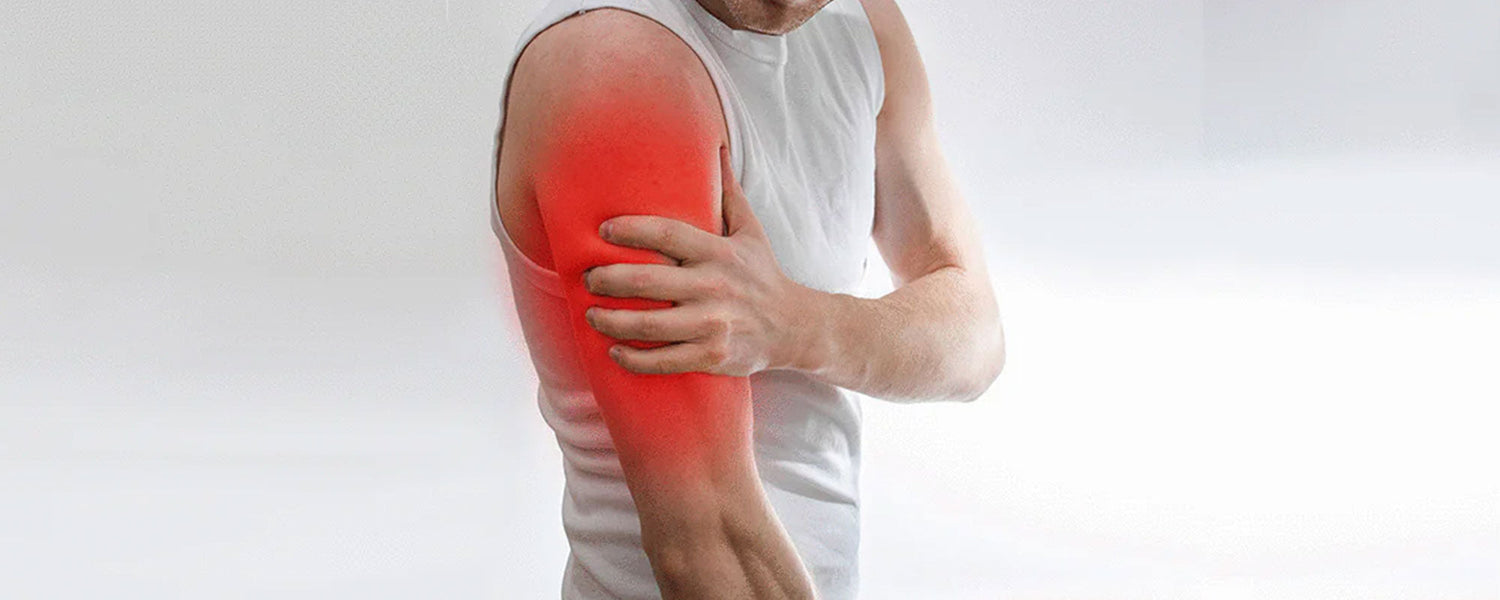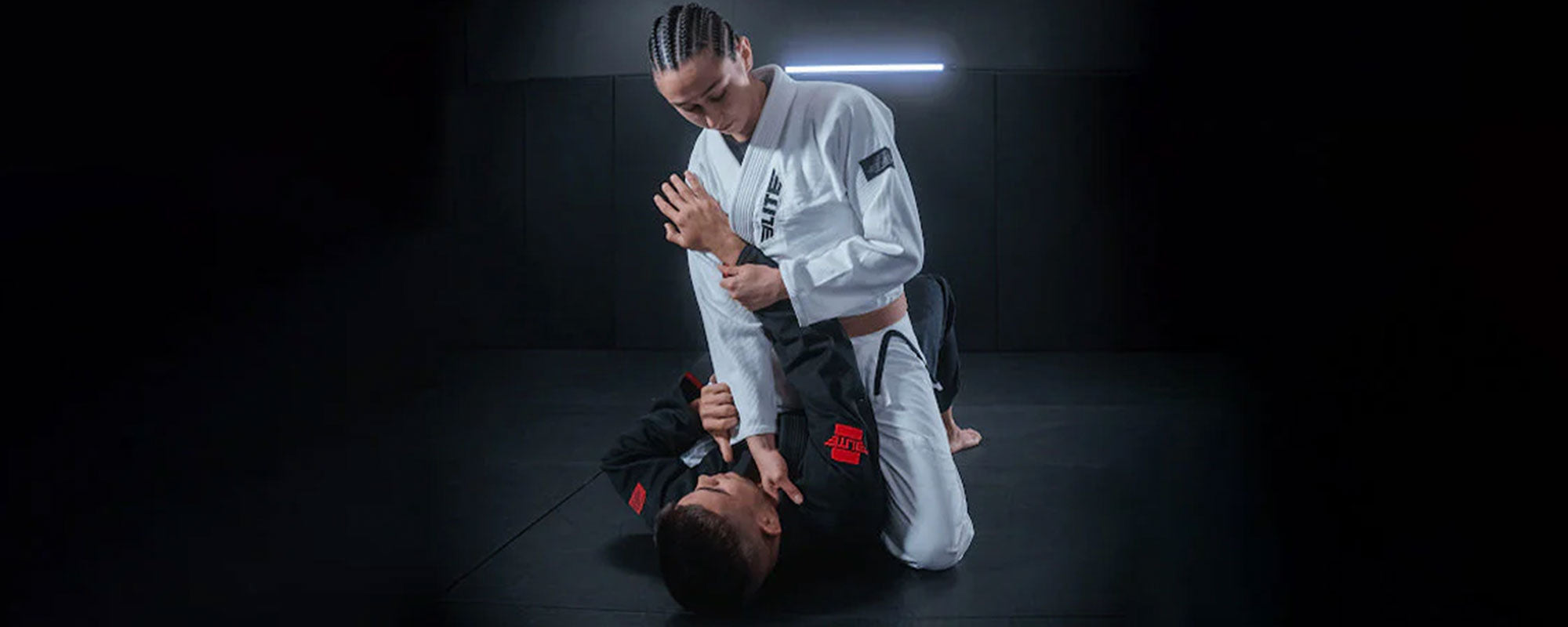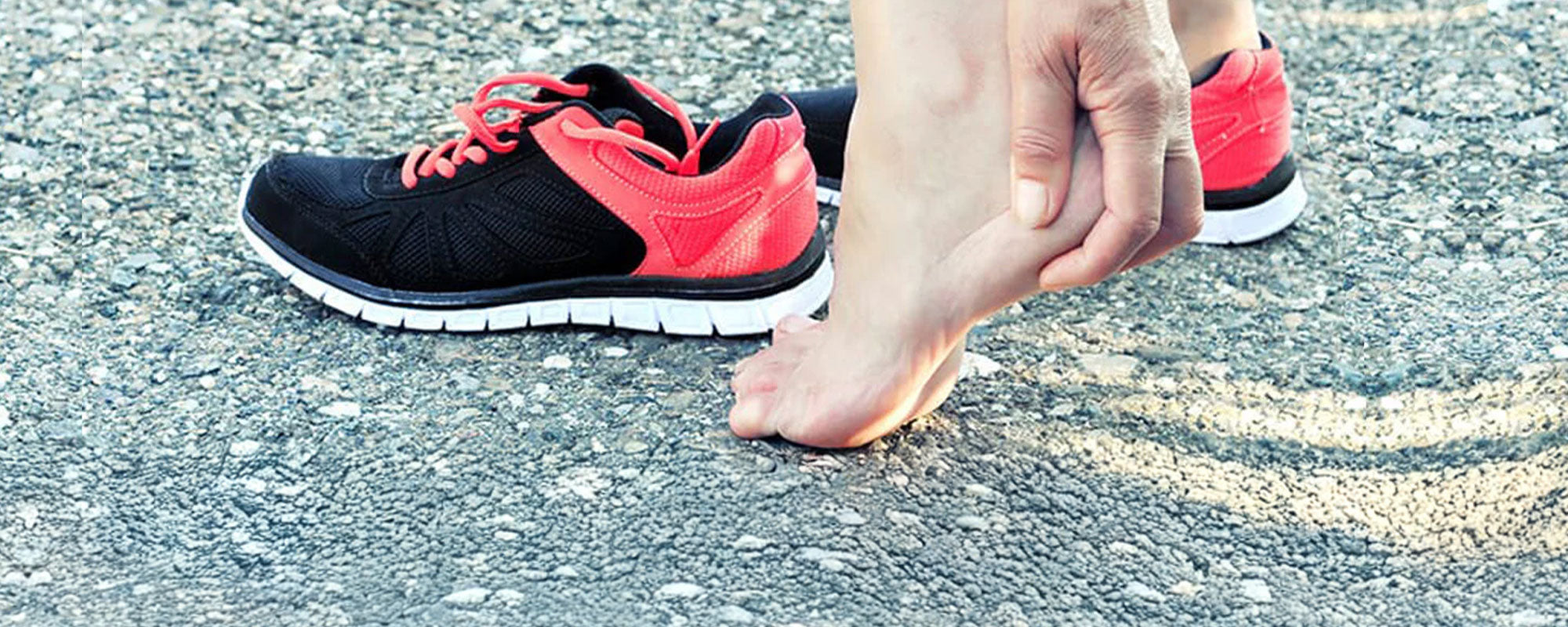Table of content
Bicep muscle groups are responsible for bending our elbows and rotating our upper arms. People who use these muscles frequently (either in daily life or in sports and gyms) often experience soreness and strain in these muscles.
Understanding bicep strain can be difficult as people often get strain mixed with soreness. Bicep strain and soreness are actually two different things that require separate treatment and care.
1. Introduction
-
Bicep Strain or a pulled muscle refers to any injury to a muscle or tendon in the bicep. (See bicep anatomy for a deeper understanding.)
Minor injuries may just cause the muscle or tendon to overstretch, whereas more serious injuries can lead to partial or complete tears in the tissue.
-
Bicep Soreness is actually a side effect of the stress or tension that exercises place on bicep muscles. Muscle soreness is widely known as DOMS – Delayed Onset Muscle Syndrome.
It is completely natural and normally starts after six to eight hours of a new activity. Bicep soreness can last up to 24-48 hours after the exercise depending upon its severity.
2. Bicep Strain Vs Bicep Soreness
A pulled muscle or strain frequently causes instant pain or discomfort. On the other hand, you won't feel muscle soreness for a day or two later.
According to the Bonnie P. Gregory, an orthopaedic surgeon,
"Strained muscle pain is severe, sharp, and limited to the site of the injury, and it can also be accompanied by edema, bruising, and trouble moving nearby joints.”
3. Types of Bicep Strains
Bicep strain can occur either in the shoulders or at the elbows.

3.1. Proximal Bicep Tendon Strain
- It occurs when the long tendon is pulled from the shoulder bone either partially or completely. Most of the bicep strains result from damage to the long head of the bicep tendon and are proximal in nature.
- You may feel tenderness and weakness in the arm in such cases. Moreover, a snapping sound around the shoulder may also be heard.
3.2. Distal Bicep Tendon Strain
- It occurs when the distal tendon is damaged or pulled from the radius bone at your elbow either partially or completely.
- You may feel weakness in bending the elbow and twisting the forearm. Moreover, there will be swelling and pain in front of the elbow.
4. Grading of Bicep Strain

Based on the level of severity, bicep strains can be classified as follows:
| Grading | Level of Severity | Explanation |
|---|---|---|
| Grade 1 | Minor Tear | Bicep tendon and muscles are overstretched without the loss of mobility and strength |
| Grade 2 | Moderate Tear | Tearing causes some loss of mobility and strength |
| Grade 3 | Complete Tear or Rupture | Complete loss of mobility and strength Surgery required for repair |
5. Causes and Risk Factors of Bicep Strain
Common causes of bicep strain include:
- Activities like sports and exercises which require repetitive use of the bicep muscles in the shoulder and elbow can lead to a bicep strain.
- If you move or uncomfortably twist your elbow, it might cause a bicep tear or strain due to an acute injury.
- A direct hit or blow to the arm
- Natural muscle fiber degeneration due to aging
People with high-risk factors for bicep strain include:
- Individuals who suffer from poor blood circulation
- Individuals with pre-existing upper arm or shoulder injuries
- Sports players who practice throwing e.g., baseball players
- People who don’t warm up prior to a workout
6. Symptoms of Bicep Strains

Bicep strain can be quickly recognized by the sharp pain felt in the arm. Other common symptoms include:
- Sudden burst of pain in the shoulder and upper arm
- Popping or snapping sound due to tendon tear
- Impairment of mobility
- Shoulder weakness and Bruises on the forearm
- Changed appearance of biceps in the upper arm
- Muscle Spasms
7. Diagnosis of Bicep Strains
-
Physical Diagnosis by a doctor is usually sufficient to determine whether you have bicep strain or not. Your doctor will assess your symptoms after discussing the medical history.
However, in case of a complete tear, the presence of a bump on your upper arm makes the diagnosis quite obvious.
- Tests like an X-ray or MRI may be required to confirm your diagnosis if there is a severe injury.
8. How to treat a Strained Bicep?
The majority of the time, non-surgical treatments will be effective in alleviating the symptoms of a strained bicep. Common non-surgical conventional treatment options include
- Rest
- Ice
- Anti-inflammatory drugs
Other non-surgical options may include the following:
- PRP – Platelet Rich Plasma Therapy: In this treatment, concentrated growth factor platelets are injected into the injured shoulder from your blood to speed up the recovery. It is relatively a new therapeutic treatment for injuries in soft tissues.

- Physical Therapy: It involves exercises and body movements that help enhance your shoulder’s flexibility and improve your shoulder strength. You can also get a customized treatment plan from your physiotherapist suited to your specific needs and circumstances.

Surgical options for strained biceps are:
- Direct Tenodesis and Acromioplasty: In this procedure, the piece of bone responsible for the pain is removed by the doctor. It is mostly recommended for younger patients with a history of shoulder injuries.
- Bicep Tenodesis: In this process, the torn or ruptured end of the bicep tendon is screwed to the bone to restore its function.
However, people rarely need surgery to fix a strained bicep. Individuals who may require surgery include:
- People who work in jobs that need complete mobility in the shoulders.
- People who suffer from prolonged cramping or muscle soreness in the bicep area around the shoulder.
- Athletes who require a complete restoration of their range of motion
9. Complications related to Bicep strains
Complications from a bicep strain are extremely rare. Possible complications associated with bicep strain are:
- Restricted range of motion
- Reduced strength and mobility
- Infection and pain in case of a surgery
10. Recovery Period
The recovery period for bicep strains varies depending upon many factors such as:
- Age of the patient
- General health of the patient
- Seriousness of the injury, etc.
Most of the time, mild injuries recover within weeks. However, severe injuries may take months to recover after the surgery.
You may be required to wear a sling for about four weeks after the surgery. In addition, your doctor will also recommend some strengthening exercises to help your muscles get stronger and return to normal functionality.
11. Prevention
In order to prevent muscle strain, make sure to,
12. Takeaways
Rest, lifestyle adjustments, and over-the-counter drugs may help you feel better in most cases.
If you're actively engaged in activities that create stress on your shoulder, make sure to stretch and educate yourself on suitable activity routines to reduce your risk of bicep strains.
13. Frequently Asked Questions:
13.1. Can a bicep strain heal on its own?
Unfortunately, bicep strain cannot heal on its own most of the time. A minor strain may be able to heal itself with proper rest. But once the bicep is torn, it cannot reattach itself to the bone. However, various treatment options are available to heal the strain depending upon its severity.
13.2. How long does a strained bicep take to heal?
It will normally take three to four months to heal. People who rest properly and work on desktops can return to their routine in one to two weeks.
13.3. Why does bicep soreness occur after the workout?
It is common for the biceps to become sore after the workout due to the stress put on the muscles during exertion. The pain is completely normal and can start within six to eight hours after the exercise.
13.4. How long does bicep soreness last?
It can last up to one to two days after the exercise.
13.5. How much time is required for a sore bicep to heal?
The length of time it takes to heal a bicep sore varies. Mild soreness can take up to a few days or weeks to heal, but more severe injuries can take months to recover from.
Photo Credit: @facebook













Leave a comment
This site is protected by hCaptcha and the hCaptcha Privacy Policy and Terms of Service apply.